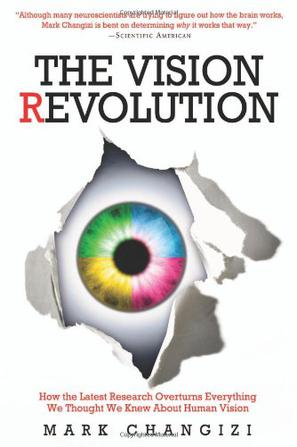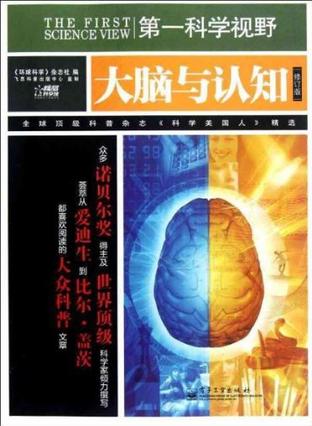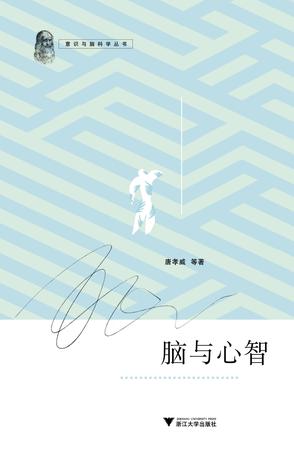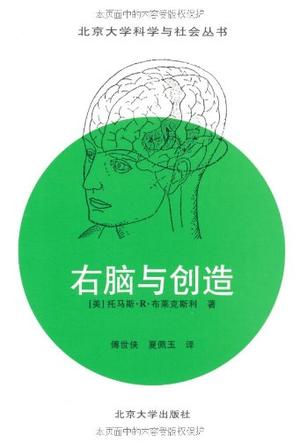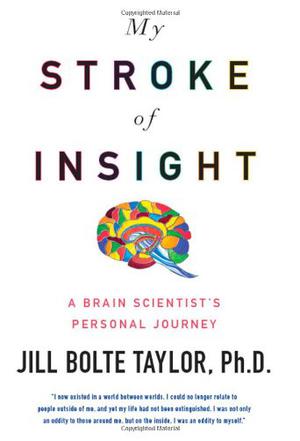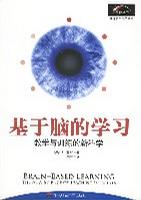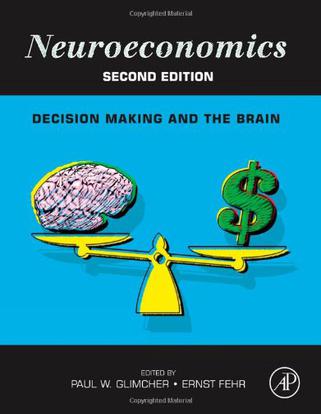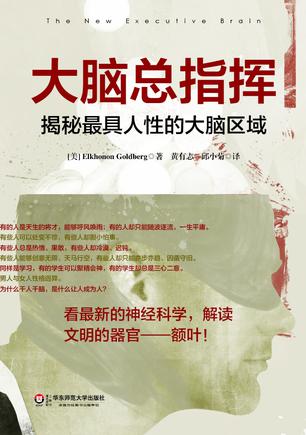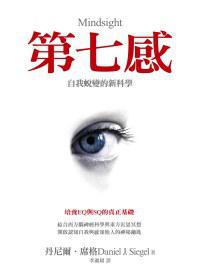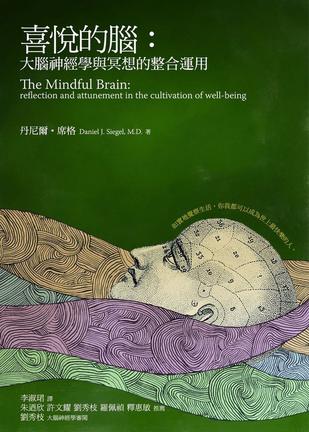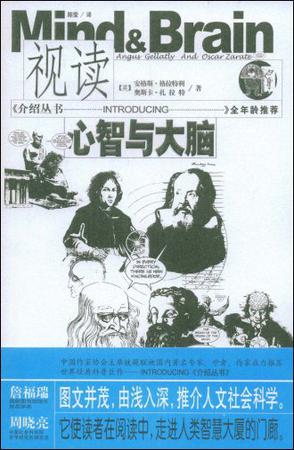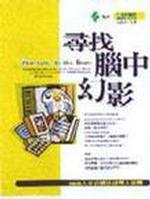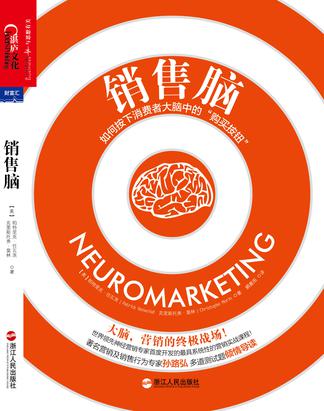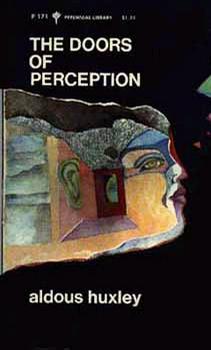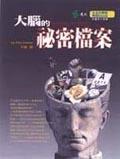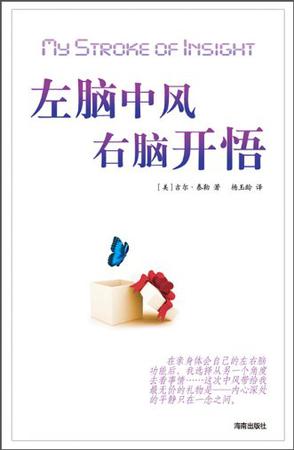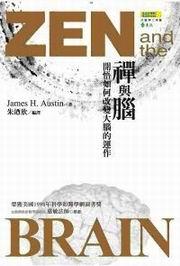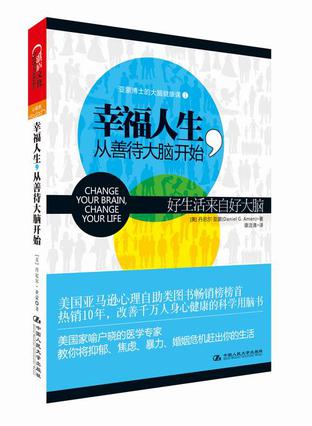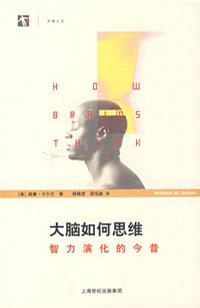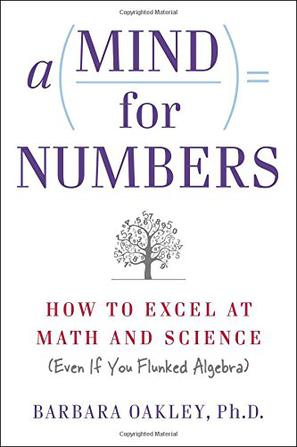欢迎来到相识电子书!
标签:脑科学
-
The Vision Revolution
Primates evolved binocular vision (both eyes facing forward) so that they can see in three dimensions, critical as they jumped from branch to branch. Higher primates developed color vision to better hunt out ripe fruit. Optical illusions succeed because they exploit the limitations of our visual processing. Wrong! All of these beliefs are false, as groundbreaking research by evolutionary scientist and neurobiologist Mark Changizi now reveals. Changizi's research centers on the "why" of human vision. Why do we have binocular vision? Why do we see in color the way we do? Why do optical illusions work? And why are we able to absorb information by reading―a very new invention from an evolutionary perspective―more readily than by hearing, which we've evolved to do over hundreds of thousands of years? The Vision Revolution answers these questions, and proves, with the detailed results of Changizi's fieldwork, that the answers are very different than traditionally believed. A radically new perspective of human vision is now emerging. The Vision Revolution is upon us. -
大脑与认知
为什么那些有着超高IQ的天才看起来却有些呆头呆脑?为什么魔术师能知道你在想什么?为什么我们的判断有时还不如幼儿正确?为什么看到别人挠痒痒,自己也会觉得痒?其实,这一切都与大脑有关,人类的行为都由大脑控制。《大脑与认知(修订版)》为读者解读关于大脑与人类认知行为之间的关系,不但能告诉你怎样能使大脑更加聪明,还能为你揭开思维的奥秘。 《大脑与认知(修订版)》由刘芳等编著。 -
脑与心智
本书由唐院士,包括他和同事们合作的,脑与心智方面论著中的部分文章汇编而成。全书分为两部分,第一部分研究脑的工作机制、认知的规律等重大科学问题,它涉及了:脑内信息加工、认知、注意、情绪、语言、意识等。第二部分是关于脑与心智方面的评述,包括:神经信息学、分子影像学、意识研究等。 国内目前关于脑与心智这两个主题相联系的研究书籍较为少见,唐院士的著作填补了这方面的空白,既从脑研究方面又从心理学方面入手研究关于意识的问题,具有扎实的理论基础,提出了有创见的意识研究的观点,是国内脑与心智研究的前沿成果。 -
右脑与创造
《右脑与创造》多侧面地论述了右脑与创造的关系,并对教育上的“右脑革命”作了系统阐述。书中引用了"裂脑人"、"半脑人"及多种脑损伤患者生动具体的实验材料;对做梦、梦呓、口吃、左撇子、男女差异、运动员心理训练等现实问题,作出饶有兴味的分析与探讨;对人脑与计算机的关系提出了独到见解。 《右脑与创造》内容有益于改进当今教育状况,也有益于个人改善行为、扩展心智、开发创造潜力。《右脑与创造》可供心理学、教育学、神经科学、医学及体育、文艺、哲学等领域的科研、教学作者参考,同时也是一切关心自身创造力开发的广大读者的理想读物。 -
My Stroke of Insight
在线阅读本书 A brain scientist's journey from a debilitating stroke to full recovery becomes an inspiring exploration of human consciousness and its possibilities On the morning of December 10, 1996, Jill Bolte Taylor, a thirty-seven-year-old Harvard-trained brain scientist, experienced a massive stroke when a blood vessel exploded in the left side of her brain. A neuroanatomist by profession, she observed her own mind completely deteriorate to the point that she could not walk, talk, read, write, or recall any of her life, all within the space of four brief hours. As the damaged left side of her brain--the rational, grounded, detail- and time-oriented side--swung in and out of function, Taylor alternated between two distinct and opposite realties: the euphoric nirvana of the intuitive and kinesthetic right brain, in which she felt a sense of complete well-being and peace; and the logical, sequential left brain, which recognized Jill was having a stroke, and enabled her to seek help before she was lost completely. In My Stroke of Insight , Taylor shares her unique perspective on the brain and its capacity for recovery, and the sense of omniscient understanding she gained from this unusual and inspiring voyage out of the abyss of a wounded brain. It would take eight years for Taylor to heal completely. Because of her knowledge of how the brain works, her respect for the cells composing her human form, and most of all an amazing mother, Taylor completely repaired her mind and recalibrated her understanding of the world according to the insights gained from her right brain that morning of December 10th. Today Taylor is convinced that the stroke was the best thing that could have happened to her. It has taught her that the feeling of nirvana is never more than a mere thought away. By stepping to the right of our left brains , we can all uncover the feelings of well-being and peace that are so often sidelined by our own brain chatter. A fascinating journey into the mechanics of the human mind, My Stroke of Insight is both a valuable recovery guide for anyone touched by a brain injury, and an emotionally stirring testimony that deep internal peace truly is accessible to anyone, at any time. Questions for Jill Bolte Taylor Amazon.com: Your first reaction when you realized what was happening to your body was one you would expect: "Oh my gosh, I'm having a stroke!" Your second, though, was a little more surprising: "Wow, this is so cool!" What could be cool about a stroke? Taylor: I grew up to study the brain because I have a brother who is only 18 months older than I am. He was very different in the way he perceived experiences and then chose to behave. As a result, I became fascinated with the human brain and how it creates our perception of reality. He was eventually diagnosed with the brain disorder schizophrenia, and I dedicated my career to the postmortem investigation of the human brain in an attempt to understand, at a biological level, what are the differences between my brain and my brothers brain. On the morning of the stroke, I realized that my brain was no longer functioning like a "normal" brain and this insight into my brother's reality excited me. I was fascinated to intimately understand what it might be like on the inside for someone who would not be diagnosed as normal. Through the eyes of a curious scientist, this was an absolutely rare and fascinating experience for me to witness the breakdown of my own mind. Amazon.com: What did you learn about the brain from your stroke and your recovery that your scientific training hadn't prepared you for? Taylor: My scientific training did not teach me anything about the human spirit and the value of compassion. I had been trained as a scientist, not as a clinician. I can only hope that we are teaching our future physicians about compassion in medicine, and I know that some medical schools, including the Indiana University School of Medicine, have created a curriculum with this intention. My training as a scientist, however, did provide me with a roadmap to how the body and brain work. And although I lost my left cognitive mind that thinks in language, I retained my right hemisphere that thinks in pictures. As a result, although I could not communicate with the external world, I had an intuitive understanding about what I needed to do in order to create an environment in which the cells in my brain could be happy and healthy enough that they could regain their function. In addition, because of my training, I had an innate trust in the ability of my brain to be able to recover itself and my mother and I respected the organ by listening to it. For example, when I was tired, I allowed my brain to sleep, and when I was fresh and capable of focusing my attention, we gave me age-appropriate toys and tools with which to work. Amazon.com: Your stroke affected functions in your left brain, leaving you to what you call the "la-la land" of your right hemisphere. What was it like to live in your right brain, and then to rebuild your left? Taylor: When the cells in my left brain became nonfunctional because they were swimming in a pool of blood, they lost their ability to inhibit the cells in my right hemisphere. In my right brain, I shifted into the consciousness of the present moment. I was in the right here, right now awareness, with no memories of my past and no perception of the future. The beauty of La-la land (my right hemisphere experience of the present moment) was that everything was an explosion of magnificent stimulation and I dwelled in a space of euphoria. This is great way to exist if you don't have to communicate with the external world or care whether or not you have the capacity to learn. I found that in order for me to be able to learn anything, however, I had to take information from the last moment and apply it to the present moment. When my left hemisphere was completely nonfunctional early on, it was impossible for me to learn, which was okay with me, but I am sure it was frustrating for those around me. A simple example of this was trying to put on my shoes and socks. I eventually became physically capable of putting my shoes and socks on, but I had no ability to understand why I would have to put my socks on before my shoes. To me they were simply independent actions that were not related and I did not have the cognitive ability to figure out the appropriate sequencing of the events. Over time, I regained the ability to weave moments back together to create an expanse of time, and with this ability came the ability to learn methodically again. Life in La-la land will always be just a thought away, but I am truly grateful for the ability to think with linearity once again. Amazon.com: What can we learn about our brains and ourselves from your experience, even if we haven't lived through the kind of brain trauma you have? Taylor: I learned that I have much more say about what goes on between my ears than I was ever taught and I believe that this is true for all of us. I used to understand that I had the ability to stop thinking about one thing by consciously choosing to preoccupy my mind with thinking about something else. But I had no idea that it only took 90 seconds for me to have an emotional circuit triggered, flush a physiological response through my body and then flush completely out of me. We can all learn that we can take full responsibility for what thoughts we are thinking and what emotional circuitry we are feeling. Knowing this and acting on this can lead us into feeling a wonderful sense of well-being and peacefulness. Amazon.com: You are the "Singin' Scientist" for Harvard's Brain Bank (just as you were before your stroke). Could you tell us about the Brain Bank (in song or not)? Taylor: There is a long-term shortage of brain tissue donated for research into the severe mental illnesses. Most people dont realize that when you sign the back of your license as an organ donor, the brain is not included. If you would like to donate your brain for research, you must contact a brain bank directly. There is also a shortage of "normal control" tissue for research. The bottom line reality is that if there were more tissue available for research, then more scientists would be dedicating their careers to the study of the severe mental illnesses and we would have more answers about what is going on with these disorders. The numbers of mentally ill individuals in our society are staggering. The most serious and disabling conditions affect about 6 percent--or one in 17--adults and 9-13 percent of children in the United States. Half of all lifetime conditions of mental illness start by age 14 years, and three-fourths by age 24 years. For more information about brain donation to the Harvard brain bank, please call 1-800-BRAINBANK or visit them at: www.brainbank.mclean.org If you would like to hear me sing the brain bank jingle, please visit www.drjilltaylor.com! -
基于脑的学习
在过去二十多年里,跟上脑研究的爆炸式激增是具有挑战性的。但聪明的教育者却正在成功应用这些研究成果。其结果是一种与脑的最佳自然学习方式相一致的学习取向的出现。基于神经科学、生物学和心理学学科的研究,我们对于学习与脑之间关系的理解涉及情绪的作用、模式、意义、环境、身体节律、态度、焦虑、心灵创伤、评估、音乐、运动、性别和多种多样的教学方式。通过整合现有的脑知识与标准教育实践,《基于脑的学习》提出了能够将我们的学校转化成完全的学习型组织的途径。 -
大脑总指挥:揭秘最具人性的大脑区域
大脑让人类区别于其他生物,赋予我们力量,是缩小的宇宙、未被探索的最后一块领域。本书探讨大脑中最神秘的部位、被称之为“文明的器官”、“大脑总指挥”的额叶。额叶在所有大脑结构中最具人类独特之处,是人类的内驱力、企图心、人格、决策与领导能力的安身之所,在整个大脑内执行最高级、最复杂的功能,在所有人类行为的成功与失败中扮演着关键角色。假如脑区的其他部位受损了,引起的神经疾病可能造成语言、记忆、感知或运动的丧失;然而如果受伤的是额叶的话,所丧失的不再是心智的品质,而是你的心智、你的核心、你自己!本书论及与额叶紧密关联的以下几种心理品质。 领导能力。额叶之于大脑,正如指挥家之于交响乐团、将军之于军队、CEO之于企业。 动机与驱力。额叶的一点细微损伤,会致人无情、迟钝与冷漠。 自我意识和对他人的意识。 创造力。书中将检视额叶在处理新奇事物时如何扮演关键角色。 男人与女人的差别。 社会责任。额叶定义我们是社会性动物,额叶发育不良或受损会使人缺乏社会约束,缺乏社会责任感,甚至导致犯罪。 注意力。额叶与连接其他脑区的通路的机能失常可能导致多动症。 老化与精神病。人类心智的衰退、老年痴呆与额叶相关。额叶功能的缺失,是诸如精神分裂症、强迫症之类疾病的核心。 -
第七感:自我蛻變的新科學
Google、Blue Man等國際各大企業團體競相邀約 「人際神經生物學」權威丹尼爾.席格博士 第七感席捲全球 第七感是每個人都有的內在潛能, 是培養EQ與SQ的真正基礎, 也是開啟認知自我與感知他人的神秘鑰匙。 就算92歲的老先生,也可藉由第七感重拾嶄新人生。 即刻開啟你的第七感,獲得連結幸福人生的關鍵力量。 什麼是第七感? 人類的五種感官知覺,讓我們得以探索外在世界; 而第六感,讓我們得以查覺自己內在的生理狀態。 第七感,是一種向內觀看的能力。 也是本書作者丹尼爾.席格博士結合腦神經科學與心理臨床治療的研究結晶。 擁有第七感,即能統合外在與內在的世界,進一步認知內心、反思自我。 開啟第七感的力量,邁向自我蛻變、打開與他人的幸福連結。 培養EQ與SQ的真正基礎--「第七感」 「第七感」這項結合西方腦神經科學與東方的沉思冥想的最新觀念,是如此的重要,因為「第七感」正是開啟認知自我與感知他人的神秘鑰匙;「第七感」也是丹尼爾.高曼提倡EQ與SQ的真正基礎,換言之,一個人要培養EQ與SQ,關鍵正在於「第七感」的專注技能。本書中的案例即證明了有些情緒嚴重失常的人,因為持續鍛鍊「第七感」,甚至不需要再依靠藥物就能回歸正常生活。而對一般人而言,透過「第七感」的專注與鍛鍊,理解自己的心理發展歷程,幫助你找出混亂與沮喪的根源,接受問題、解決問題、放下問題。有了「第七感」,也能充分感知他人的內在世界,進而建立良好而有效的人際溝通。每個人都有「第七感」,並且隨著「第七感」的精進,大腦的迴路與結構也會隨之改變,換言之,就是每個人終其一生都能持續不斷的培養「第七感」,進而改變自己,邁進自我蛻變的新人生。 與人心共鳴的科學寫作 席格醫師,是一位理性與感性兼具的科學敘述者。透過席格醫師深入淺出的說明,一窺第七感研究的科學理論依據以及實用的心靈鍛鍊方法,任何人都可以依此來培養第七感,進而獲得健康的身心。不僅如此,席格醫師以感性的筆法,為我們介紹參與第七感治療練習的個案實例,共同見證求助者的心路歷程,也看見這些求助者與席格醫師交會的共鳴樂章,動人且美好。 第七感相伴的人生故事 「愛不是來自內心嗎?」七歲的琳娜問,為什麼以往最親近的媽媽,車禍重傷復原後,一切如常,卻再也沒有能力愛她?除非媽媽大腦中某個沉睡的部份再次甦醒,否則好多好多的愛將永遠關在媽媽的心裡,無法表達。七歲的琳娜會怎麼做? 一位罹患躁鬱症企圖自殺的十六歲男孩強納森,不需要使用藥物,透過第七感的力量平息了狂亂的情緒風暴,並且立志成為一名心理醫師。 一輩子冷面無私、不知感情為何物的成功律師斯圖亞特,是什麼讓他在九十二歲高齡仍能找到生命中的溫柔?在遲暮之年終於懂得為所愛之人付出情感。 身心俱疲、情感壓抑的安妮形容自己吃東西只是為了「活下去」。第七感幫助她找出深藏在破碎童年記憶中的哀傷源頭,解除重重枷鎖,學會理解,原諒他人,也原諒自己。 艾麗森究竟將哪段記憶給「刪除」了?她要如何才能不再當過往創傷的囚徒,拿回人生主導權? 痛苦不安的親子依附經驗,極有可能代代相傳,但瑞蓓卡的經驗告訴我們擺脫宿命悲劇的可能性,任何人都有能力給予下一代豐沛的滋養與愛。 丹尼絲與彼得的婚姻關係岌岌可危,敵意相向,爭吵不休。席格醫師給他們的任務是:成為對方內在世界的「捍衛者」。讓他們重新學會如何在愛裡迎向對方。 生命的短暫、無常與死亡的終將來到,微渺的人類該如何面對這個顛撲不破的真理?答案就在第七感的奧秘裡。 輕鬆讀懂最新腦神經科學觀念 本書為席格博士從事腦神經科學研究與臨床治療二十五年以來,第一本為大眾而寫的書,書中詳細說明科學知識,透過實例說明專業概念,並有席格博士自創的簡易掌中大腦模型,簡單易懂,讀者很容易即能掌握腦神經科學的最新觀念。本書也獲得《EQ》、《SQ》暢銷書作家丹尼爾.高曼(Daniel Goleman)的高度推薦。 -
喜悅的腦
長久以來,世界各地的古老文化與宗教都會利用各式各樣的方法,包括冥想、祈禱、瑜珈,太極等,來幫助個人聚焦專注力,調整到與當下同頻,藉此獲得身心健康。現代科學也已經證實,覺照(mindfulness)確實能提升我們的身心健康及生活品質。在這樣的實證支持下,丹尼爾‧席格結合了頂尖研究的發現與覺照練習的智慧,顯示出這項可經由學習獲得的技巧如何有效,又如何充實我們的人生。 這項結合科學與實務分析的核心理念是,時時覺察當下會使我們調整到與自己同頻,或說共鳴,運用到大腦中特定的社會與情感回路。而覺照練習會刺激這些「共鳴回路」生長,讓暫時的覺照覺察狀態蛻變為富有韌性的恆久狀態。 這種生理與心理的徹底蛻變,之所以能帶給我們幸福,是因為它會使大腦運作整合,而帶來許多益處,包括:情緒平衡、改善心血管功能、增強免疫功能,甚至會提升一個人的同理心與自我了解等,更有助於我們以前所未有的沉穩清明感,面對種種挑戰。 《喜悅的腦》結合了現代科學的研究發現與作者親身經驗的洞見,對各人的生活、人際關係,乃至於促進身心健康與幸福人生等,提供了獨特而有充分知識根據的觀點。 這本書是寫給有興趣深入了解心理,並了解如何培養自己與他人心理的人,甚且特別有益於幫助他人適應生活或成長的人,例如老師、臨床治療師、助人者,企業領導者,乃至我們每一個人。全然的覺照,正是促進人類社會更加健康茁壯所不可或缺的力量。 -
视读心智与大脑
《视读心智与大脑》不仅介绍了这门学科中种种概念的发展和演化过程,而且对大脑的生理结构及功能进行了全面的介绍。不同时代的人们,由于科学发展水平的限制。对于大脑生理结构的了解程度各不相同,进而导致对大脑的功能——心理的认识不尽相同。 《视读心智与大脑》作者采用了大量具体而有趣的例子以及生动形象的插图,图文并茂,帮助读者在学习过程中理解相关知识。这本妙趣横生的小书不仅仅适用于心理学或相关专业的学者,它更是一部面向所有读者的科普教材。读者通过阅读此书,能够对大脑与心理有一个科学而准确的理解。 -
尋找腦中幻影
由於腦傷之故,一些人因為自己缺腿、缺手或相信某人的母親已被看似騙子的人所替代等,而產生如幻肢禍患首現象的幻覺,在臨床上往往被視為精神病或神經學上的奇特案例。作者是一位大腦研究學家,他以平易近人的文字,侃侃道出他與病人接觸的真實精采實例,一窺我們的大腦機制。本書獲紐約時報書評、科學美國人及新科學家等的好評。 -
销售脑
《销售脑》以脑科学、销售和营销理论为基础,以旧脑理论为核心,创立了世界公认的第一个“销售给旧脑”模型。“销售脑模型”是对传统营销理论的颠覆! 大脑由三部分组成:新脑、间脑、旧脑,但只有旧脑才是人类决策的决定者。只有影响了旧脑,才能影响人的决策,使沟通效果更显著! 3个脑、6大刺激源、4大步骤(即4步法)、6大信息模块、7大影响力加速器,助你达成完美交易! 案例丰富,帮助读者理解4步法在日常生活中的具体运用。 -
The Doors of Perception
The Doors of Perception is a 1954 book by Aldous Huxley detailing his experiences when taking mescaline. This short book is considered to be one of the most profound studies of the effects of mind-expanding drugs and what they teach about how the mind works. The title comes from William Blake's The Marriage of Heaven and Hell: "If the doors of perception were cleansed,every thing would appear to man as it is, infinite. For man has closed himself up, till he sees all things through narrow chinks of his cavern." -
左脑中风右脑开悟
《左脑中风 右脑开悟》内容简介:1996年的冬晨,哈佛大学脑神经科学家吉尔•泰勒左脑血管突然爆裂,她严重中风了,当时她才37岁。但是泰勒没有被击溃,她凭藉著自己对大脑的了解,用右脑解救并开发了左脑,她将中风及康复过程经历出书。这是一部帮助中风者的医疗手册,更是对一次心灵探索的记录。通过中风,泰勒体会到“开悟”并不是一种虚幻的感觉,而是一种平和的生活态度。她说:“在亲身体会自己的左右脑功能后,我选择从另一个角度去看事情……这次中风带给我最无价的礼物是——内心深处的平静只在一念之间。” -
禪與腦:開悟如何改變大腦的運作
赫胥黎把人類精神成長的基本趨勢稱為「永恆哲學」,奧斯汀認為這種趨勢表示一種動態的、直接的「永恆心理生理學」,因為覺醒或開悟發生在人類的腦經歷重大改變的時刻。開悟的顛峰經驗是什麼?這些狀態如何能深入強化,卻又能簡化腦的運作? 在這本書裡,禪學變成廣泛探索意識的楔子。為了要釐清哪些腦機制產生禪的狀態,我們必須對腦的解剖、生理和生化有某種程度的瞭解。奧斯汀是腦神經科學家,同時也是禪修行者,他把腦研究與他的禪經驗交織在一起:科學的部分廣泛而嚴謹,禪的部分清晰又吸引人。 第一部分談到禪是什麼,不是什麼;第二部分檢視禪的基本生理機制,不是它的偶發現象;第三部分整理腦研究的新近相關發展;第四部分定義意識的通常狀態和不同狀態。這項基礎工作,也作為第五到第七部分的序曲:首先提供幾種不同意識狀態的特殊實例,接著討論意識如何、何處與何時在人類腦的深處浮現。最後,第八部分是超越短暫經驗的澄清持續開悟階段,和它對社會的影響。 《禪與腦》總結呈現最新的證據,這本書同時也是一位神經科醫師個人的探索,以及專業研究的故事。 -
幸福人生,从善待大脑开始
• 畅销十年,美国亚马逊心理自助类图书畅销榜榜首! • 50多幅真实、直观的脑扫描图片! • 改变千万人生活的科学用脑书! 本书的作者丹尼尔•亚蒙以真实生动的案例从更广阔的视野解释人类各种异常和正常的行为。揭示远离抑郁、冲动、偏执、愤怒的秘诀,让你优化自己的大脑,在人际关系、工作、学业,还是对自身的认识和感受上更加成功,拥有更完美的人生。 本书提供带来好情绪的11种方法 让你每日放松的8种方法 让你全神贯注的10种方法 让你随和、平静的11种方法 将抑郁、分心、焦虑、暴力、婚姻危机赶出你的生活! -
大脑如何思维
本书总结了人类研究大脑如何思维的历史,展现了智力的本质、基础、进化过程及与意识的关系,对大脑的运作机制进行探讨,同时展望了超人智力。本书的语言简洁、生动,是一本非常精彩的科普读物。 皮亚杰曾说,智力是你不知怎么办时动用的东西。那么,智力的本质是什么?动物的智力如何向人类的智力进化?它的基础是什么?这些问题都指引着我们探讨大脑是如何思维的。本书正是一本描述大脑如何工作的优秀科普读物。本书总结了人类研究大脑如何思维的历史,展现了智力的本质、基础、进化过程及与意识的关系,对大脑的运作机制进行探讨,同时展望了超人智力。 -
A Mind For Numbers
Whether you are a student struggling to fulfill a math or science requirement, or you are embarking on a career change that requires a higher level of math competency, A Mind for Numbers offers the tools you need to get a better grasp of that intimidating but inescapable field. Engineering professor Barbara Oakley knows firsthand how it feels to struggle with math. She flunked her way through high school math and science courses, before enlisting in the army immediately after graduation. When she saw how her lack of mathematical and technical savvy severely limited her options—both to rise in the military and to explore other careers—she returned to school with a newfound determination to re-tool her brain to master the very subjects that had given her so much trouble throughout her entire life. In A Mind for Numbers, Dr. Oakley lets us in on the secrets to effectively learning math and science—secrets that even dedicated and successful students wish they’d known earlier. Contrary to popular belief, math requires creative, as well as analytical, thinking. Most people think that there’s only one way to do a problem, when in actuality, there are often a number of different solutions—you just need the creativity to see them. For example, there are more than three hundred different known proofs of the Pythagorean Theorem. In short, studying a problem in a laser-focused way until you reach a solution is not an effective way to learn math. Rather, it involves taking the time to step away from a problem and allow the more relaxed and creative part of the brain to take over. A Mind for Numbers shows us that we all have what it takes to excel in math, and learning it is not as painful as some might think!
热门标签
下载排行榜
- 1 梦的解析:最佳译本
- 2 李鸿章全传
- 3 淡定的智慧
- 4 心理操控术
- 5 哈佛口才课
- 6 俗世奇人
- 7 日瓦戈医生
- 8 笑死你的逻辑学
- 9 历史老师没教过的历史
- 10 1分钟和陌生人成为朋友

